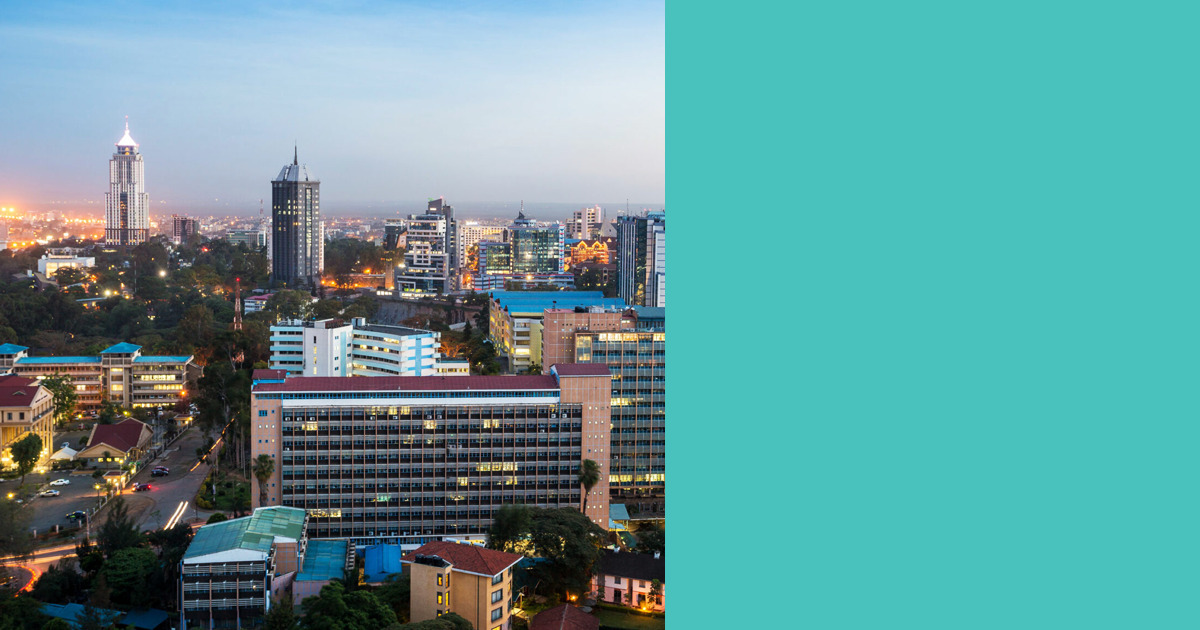Reawakening the circular economy discourse will edge Kenya toward sustainability

According to the World Bank (2021), Kenya is one of sub-Saharan Africa’s fastest developing economies. The Kenyan economy’s success has been bolstered by a stable macroeconomic environment, high investor confidence, and a resilient services sector.
Furthermore, the country is proud of its market-based economy and is often regarded as East Africa’s economic, commercial, financial, and logistics centre. Kenya has been successful in recruiting exporters and investors who take advantage of the country’s strategic location, diverse economy, entrepreneurial workforce, extensive air routes, and status as a regional financial centre.
Nonetheless, businesses in Kenya face a number of obstacles, including corruption, land titles, and governmental inconsistencies such as fluctuating tax rates. At the same time, Kenya’s flow of Foreign Direct Investment continues to grow, with the majority of foreign investment going towards renewable energy projects.
The Kenya Kwanza administration has given a new lease of lease to the sustainability question, with government ministries openly pursuing the circular economy model. CS for Trade, Mr. Moses Kuria, in a past meeting with Kenya Association of Manufacturers drummed up support for the circular economy saying that time was up for the linear economy model, with the trajectory of positioning Kenya at the heart of sustainability and attract more foreign investments.
Globally, the world continues to contend with the challenges posed by the linear economy. In 2019 for instance, over 92 billion tonnes of materials were extracted and processed contributing to about half of global CO2 emissions. It is projected that the use of global resources has tripled since 1970 and could double by 2050 if business continues to exist as usual.
But what is a linear economy model and circular economy model? Linear economy is the traditional model where raw materials are collected and transformed into products that consumers use, discarding them as waste with no concern for their ecological footprint. The only known benefits of a linear economy is that it allows as many products as possible to be created and sold and allows nations to exploit natural resources to their fullest extent. It can be easily understood as a system that, “Takes – Makes and Disposes”.
On the other hand, a circular economy is an economic system centred on the reusing and regeneration of materials or products, particularly as a means of sustaining production in a sustainable or ecologically benign manner. The concept of a circular economy has gained ground, with many businesses aiming to operate in a waste-free manner. It can best be understood as the model that focuses on, “Reducing Wastage and Pollution with Repair, Reuse and Reduction”. Like its name, the design of such production is anchored on the need to eliminate waste and pollution, circulate products and materials at their highest value and regenerate nature.
In contrast, the main distinction between circular and linear economy is that the linear economy prioritises profitability regardless of the product life cycle, whereas the circular economy prioritises sustainability. Businesses must prepare for a circular economy strategy by looking at all elements of their business and value chain through the circular Rethink, Redesign, Reduce, Reuse, Repair, Refurbish, Remanufacture, and Recycle lens.
Although a circular economy is a logical and natural cycle of how we use resources, successfully adopting and operating a circular economy is not so straightforward. It necessitates an “all-in” approach from industry, citizens, and government. At the same time, this demonstrates a high degree of participation in the circular economy paradigm. It is not only environmentally sustainable, but it also produces jobs along the road. It generates environmental value, consumer value, resource value, and informational value for businesses. The model is all about creating a long-term business in every way.
It is essential that economies reevaluate their production patterns in favor of the circular economy in light of the expanding global population, the already deteriorated environment from overuse, and growing concerns about climate change. The linear economy and its proclivity for wasting important materials is a major issue for a planet with limited resources.
Kenya’s government has pledged to transition from a linear to a circular economy. The circular economy seeks to improve resource utilisation, shut resource flow loops by recovering as much as possible, and reduce waste and pollution through improved design. Recently, Ms Soipan Tuya, Cabinet Secretary, Ministry of Environment, Climate Change, and Forestry, confirmed that they are developing the Circular Economy Plan and are preparing to launch the Waste Management Council and the Extended Producer Responsibility (EPR) Regulations will be passed soon, and the Waste Rules 2006 will be revised to include all types of waste.
Kenya has become more conscious of the problems produced by the linear economy and is on a path to strategically integrating circularity in critical sectors through meaningful relationships between government agencies and the private sector, which will result in the emergence of new enterprises involved in redesigning, recycling, and waste management. Nonetheless, more has to be done to guarantee that policy priorities are funded and allocated in order for the economy to fully transition to a circular economy.
These concerns have been enshrined in our economic blueprint, dubbed Kenya Vision 2030, being the Country’s development strategy for the years 2008 to 2030. Its goal is to assist Kenya in becoming a “newly industrializing, middle-income country that provides a high-quality of living to all of its residents by 2030 in a clean and secure environment.” The strategy emphasises the necessity for waste management systems to be established in chosen local authorities under the social pillar. The vision identified waste management as a serious national issue that required immediate attention. Plastics management was identified as a flagship issue that required immediate attention through public-private partnerships.
Now more than ever, Kenyan companies and any foreign investors, need to rethink their working strategy and align themselves to the realities of the Circular economy.

